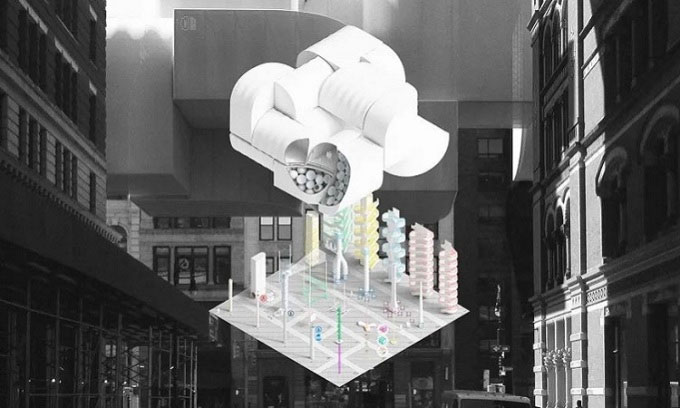Floating like a mini balloon, modular buildings can provide elevated living spaces and contribute to climate change mitigation.
The Oversky Project proposes the construction of a series of semi-floating structures designed to utilize the space between roadways and buildings. Based on technology that allows rigid-frame balloons to float, these modular structures will connect to form clusters of living spaces suspended in mid-air, linking to adjacent buildings or other fixed structures. Developed by the research and design studio Framlab, this project aims to transform living spaces above the ground.

Modular structure of the Oversky project. (Photo: Framlab)
Tjeldflaat describes this as an infrastructure system based on proven technology, utilizing closed carbon fiber chambers filled with inert helium gas, which is lighter than air. This allows the modules to maintain a sturdy structure and float like small balloons. When combined, they can serve as personal rooms, offices, or storage spaces in the air. Tjeldflaat explains that suspended walkways will connect the clusters of modules to nearby buildings.
This design also presents a new tool for combating climate change. A significant challenge faced by many cities worldwide is the urban heat island effect. The high density of skyscrapers and paved sidewalks absorb and retain more heat than natural land or undeveloped areas, causing cities to become hotter and leading to increased demand for air conditioning and associated emissions.
The modular structure of Oversky will create a microclimate that reflects sunlight and radiates it back into the atmosphere. Through nano-optics technology, the modules will utilize foam materials with numerous tiny pockets that can radiate heat back into the atmosphere, providing shade for the ground below. Tjeldflaat’s drawings illustrate how the structure can create shade in spaces between buildings.
Unveiled at an architecture and climate change exhibition at the Bildmuseet art museum in Sweden, the project suggests an alternative solution to pollution-causing air conditioning. Conventional air conditioning units release significant heat and refrigerant gases while relying on energy from fossil fuels.



















































